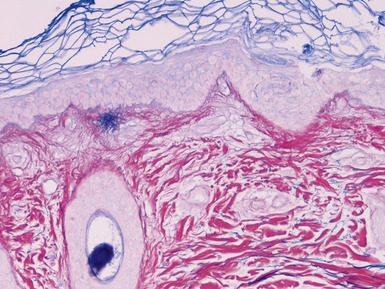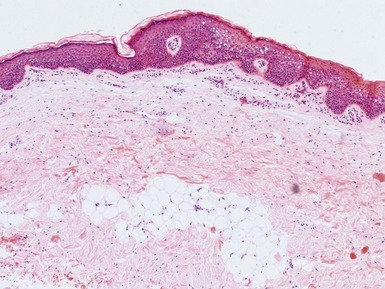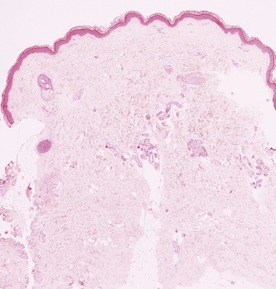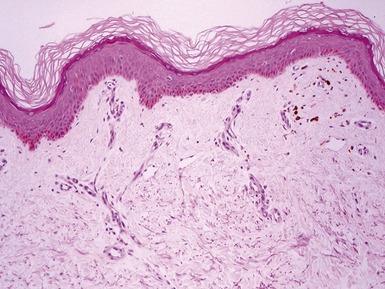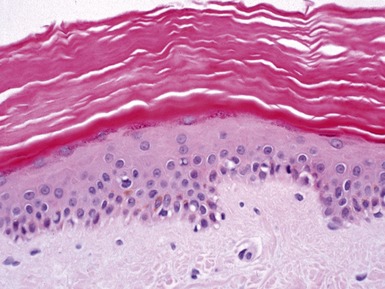CHAPTER 11 DERMATOPATHOLOGY
Ichthyoses
Non-syndromic ichthyoses
Lamellar ichthyosis / congenital ichthyosiform erythroderma (non-bullous ichthyosiform erythroderma)
Epidermolysis bullosa (EB)
APPROACH TO PEDIATRIC SKIN BIOPSY INTERPRETATION
• Close clinicopathological correlation and frequent multidisciplinary team meetings with joint discussion of clinical photographs and histopathological material is essential in pathological interpretation of skin biopsies
• Interpretation of vascular lesions is assisted by attendance of the pathologist at meetings where discussion of radiological findings including Doppler flow studies takes place
• Timing of the biopsy in relation to the evolutionary stage of the disease may affect histological features
• Beware the traumatic biopsy taken with forceps which may induce artefactual separation of the epidermis from the underlying dermis (Fig 11.1)
SPECIFIC ENTITIES IN PEDIATRIC DERMATOPATHOLOGY
• Due to the importance of clinicopathological correlation of clinical, genetic and histopathological findings for correct interpretation of skin biopsies, for many conditions relevant diagnostic clinical and genetic findings are provided in this chapter
CUTIS LAXA
Genetics
Histopathological features
FOCAL DERMAL HYPOPLASIA (GOLTZ SYNDROME)
Clinical features
RESTRICTIVE DERMOPATHY
ICHTHYOSES
Introduction
• Inflammatory scaling disorders, such as psoriasis and eczema, and disorders such as pityriasis rubra pilaris are usually categorized separately



























